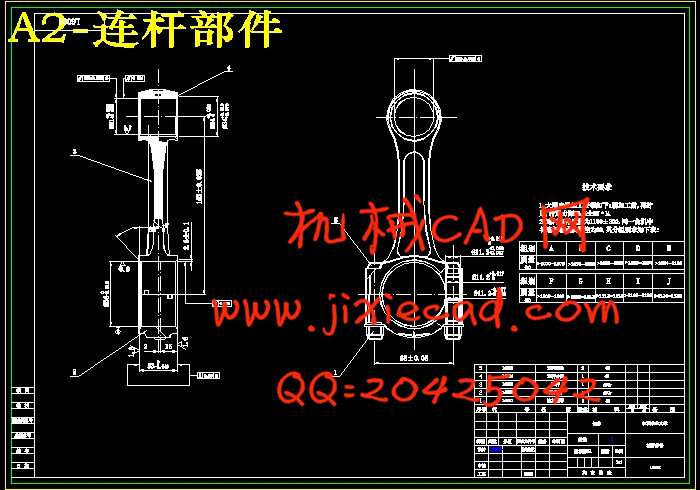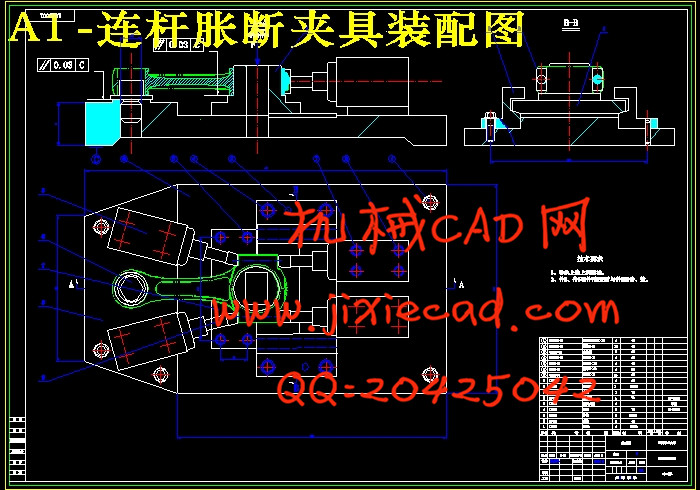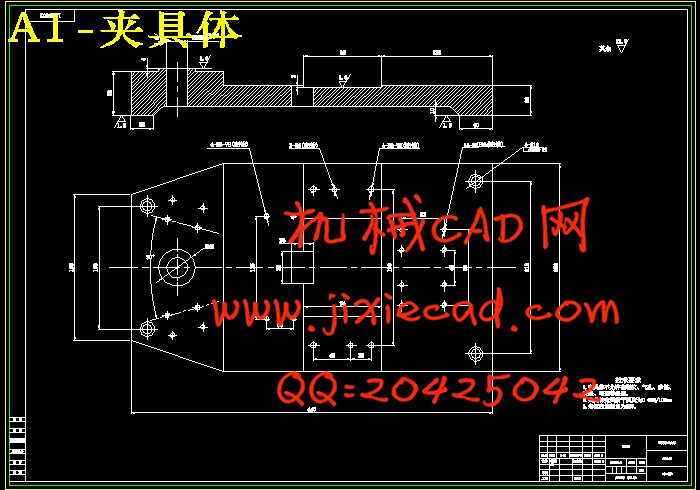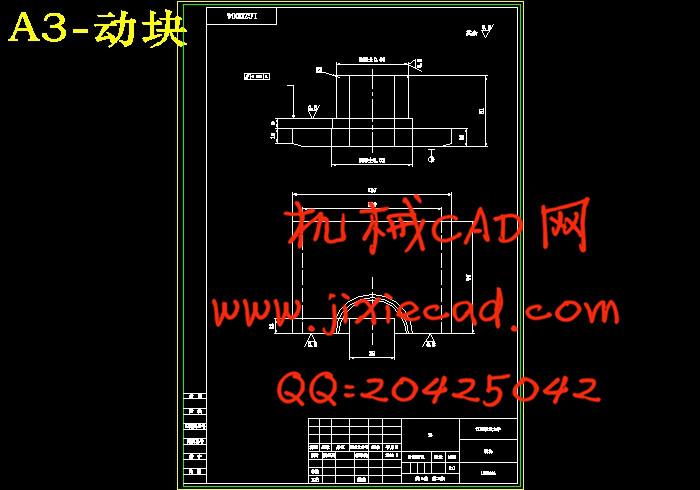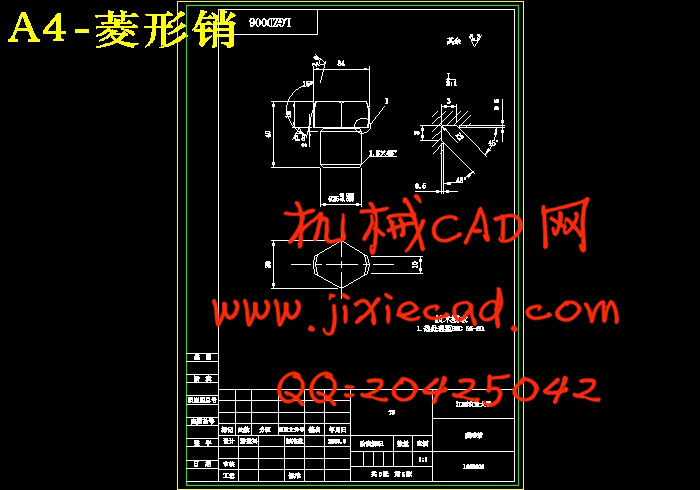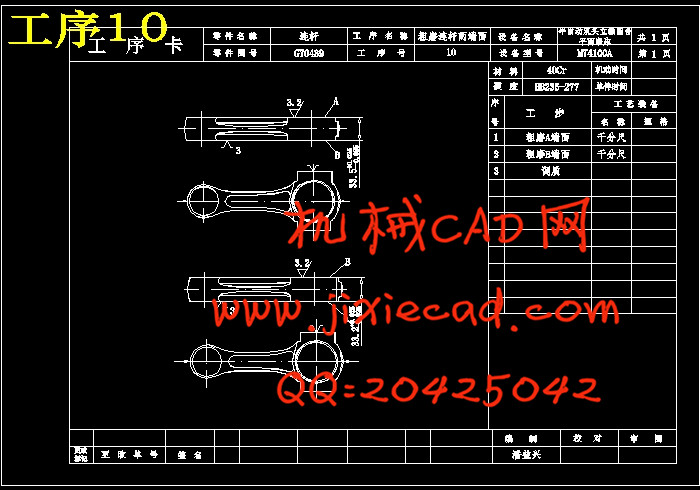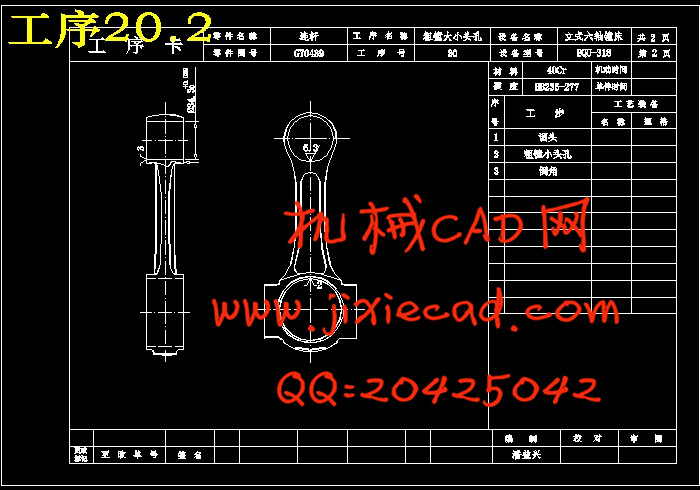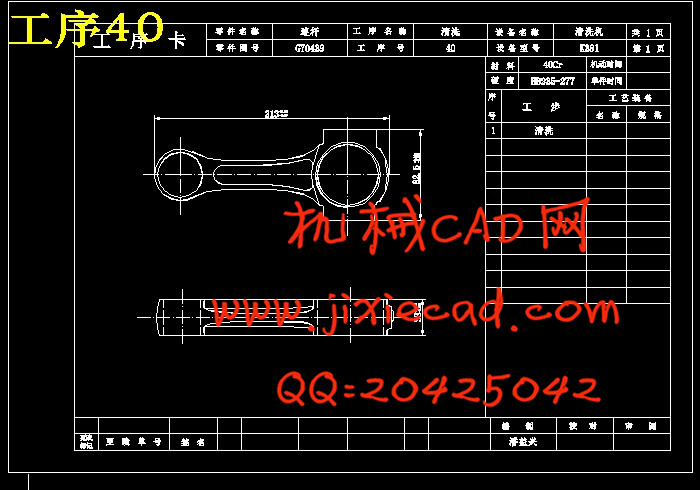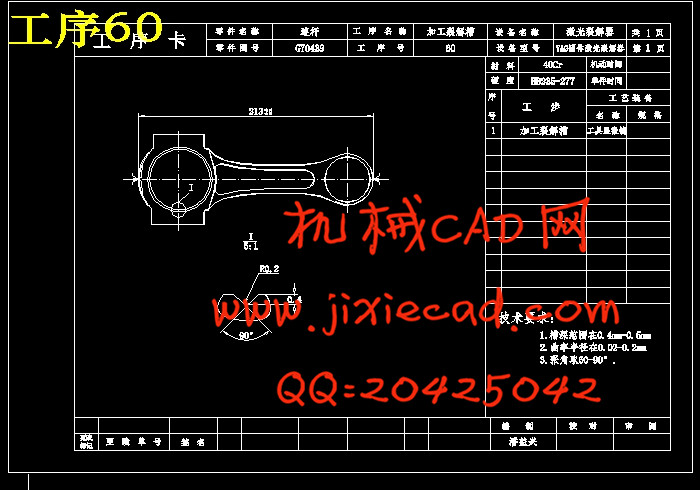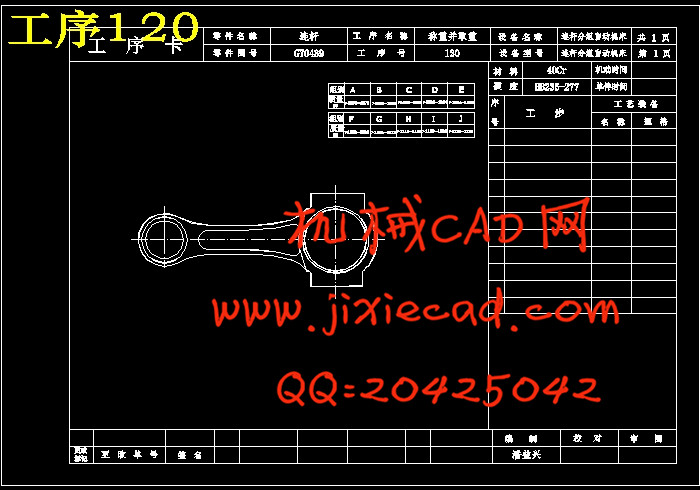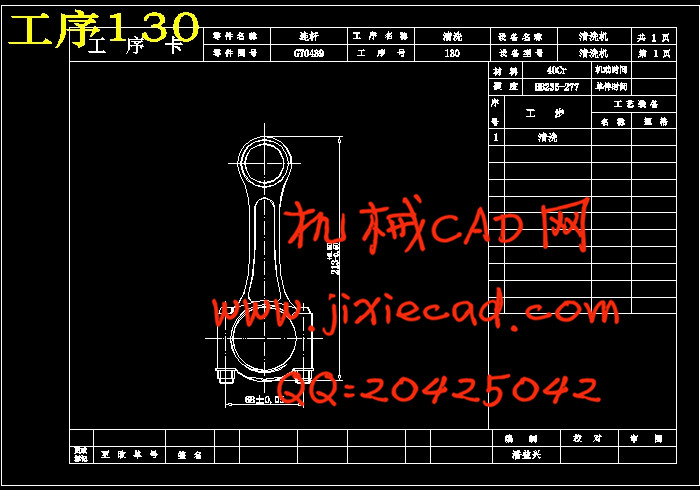设计简介
摘 要
连杆是发动机的主要传动件之一,本文主要论述了连杆裂解的加工工艺及其夹具设计。连杆裂解是对连杆杆身和连杆盖结合面进行无屑断裂剖分加工的新技术,具有构思新颖、操作经济、效益显著的特点。阐述了连杆裂解加工原理、主要工艺流程以及裂解加工方法对材料和锻造毛坯的要求。介绍了加工裂解槽、有控裂解、装配螺栓等核心工序与设备,探讨了裂解加工常见缺陷及预防措施。连杆的尺寸精度、形状精度以及位置精度的要求都很高,而连杆的刚性比较差,容易产生变形,因此在安排工艺过程时,就需要把各主要表面的粗精加工工序分开。逐步减少加工余量、切削力及内应力的作用,并修正加工后的变形,就能最后达到零件的技术要求。关键词:连杆 裂解加工工艺 变形 夹具设计
The Processing Technology and Fixture Design for Connecting Rod
Abstract:The connecting rod is one of the main driving medium of engine,this text expounds mainly the machining technology and the design of clamping device of the connecting rod.Connecting rod splitting decomposition is a new technology of chipless splitting of connecting rod and connecting rod cap at their junction plane. It has advantages of creative design,economical application and remarkable benefits.Machining principle,main processes of connecting rod splitting decomposition and requirements of splitting decomposition on material and forging stock are dictated.Key working procedures and facilities,such as splitting decomposition groove machining ,controlled splitting decomposition and bolt assembling,etc.,are introduced ,and frequent defects and preventive measures in splitting decomposition are discussed.
Key words:Connecting rod Processing technology for splitting decomposition Determi-ation Fixture Design
目 录
摘要........................................................................................................................................... I
Abstract......................................................................................................................................II
引言............................................................................................................................................1
1 连杆加工工艺过程设计........................................................................................................2
1.1 工艺规程的制定.............................................................................................................3
1.1.1 制订工艺规程的原始资料................................................................................4
1.2 连杆工艺过程的准备工作.............................................................................................5
1.2.1 连杆的功用及结构特点概述............................................................................6
1.2.2 连杆的技术要求分析........................................................................................7
1.2.3 连杆的功用及结构特点概述............................................................................8
1.3 连杆的工艺规程设计.....................................................................................................9
1.3.1 连杆加工工艺的主要特点..............................................................................10
1.3.2 连杆工艺方案的比较及确定..........................................................................11
1.4 连杆的机械加工工艺过程...........................................................................................14
2 夹具设计..............................................................................................................................15
2.1 连杆胀断工艺夹具设计...............................................................................................15
2.1.1 连杆胀断工艺性分析......................................................................................15
2.1.2 定位方案设计..................................................................................................17
2.1.3 导引方案设计..................................................................................................17
2.1.4 夹紧方案设计..................................................................................................18
2.1.5 夹具体设计......................................................................................................19
2.1.6 其他装置设计..................................................................................................20
2.1.7 夹具精度分析..................................................................................................21
2.1.8 夹具工作原理简介..........................................................................................21
2.2 绘总装配图和零件图...................................................................................................22
结束语......................................................................................................................................23
参考文献..................................................................................................................................24
致谢..........................................................................................................................................25


